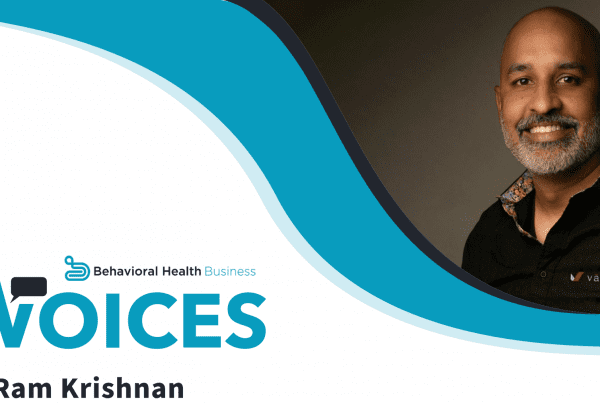An EHR migration can sometimes turn into a nightmare despite careful planning. The transition from one electronic health record (EHR) system to another can be fraught with challenges, leading to disruptions in workflow, productivity, and patient care.
It’s crucial to understand common migration challenges and strategies for overcoming them. By anticipating potential obstacles and having plans in place for them, your behavioral health practice can navigate EHR migrations more effectively.
Managing Collateral Damage
Understanding the potential fallout from an EHR migration, such as temporary disruptions in workflow and productivity, is essential. Other challenges may include data migration issues, system downtime, and learning curves associated with the new EHR system. Any tool as central to a practice as an EHR will require some learning and time to get up to speed.
It’s important to get comfortable with the inevitability of challenges and with maintaining a focus on long-term benefits. Providing additional training and support to staff, implementing contingency plans, and fostering a culture of resilience and adaptability all go a long way toward helping a practice succeed with its EHR transition plan.
Consistency and Variation Across EHRs
Identifying aspects of the EHR migration process that are consistent across all EHRs can help behavioral health practices develop a standardized approach. For example, data migration is part of the process no matter which EHR a practice is switching from or switching to. The need for accuracy and integrity exists no matter what.
Ensuring accuracy involves reviewing and organizing existing data to identify any inconsistencies, duplicates, or outdated information that could affect the migration process. Data mapping, where data from the old system is matched to the corresponding fields in the new system, is an important part of achieving a seamless transition and maintaining data integrity.
Training and Support
The need for staff training and support during any EHR migration process is another constant across all EHRs. Regardless of the specific platform being implemented, staff will need training to familiarize themselves with the new system’s interface, features, and functionalities.
Providing comprehensive training sessions and ongoing support can help mitigate resistance to change and ensure a smooth transition for all users. A tool is only helpful if people use it, and adequate training can be an important part of driving adoption.
Compliance
Furthermore, adherence to regulatory requirements and best practices is a need throughout any EHR migration. Practices must ensure compliance with HIPAA regulations and other industry standards to protect patient data privacy and security during the migration process. This is especially important in the field of behavioral health, where the confidentiality of patient data is a priority.
Security
Consider a platform’s security measures and data encryption capabilities, among other factors. Ensure that the system includes robust access controls, audit trails, and safeguards to prevent unauthorized access of sensitive information. A breach of patient privacy can have severe consequences for both a practice and any individuals involved, making data security a top priority in EHR selection.
Knowing When to Cut Ties
Here are the signs that indicate it may be time to consider cutting ties with your current EHR provider:
- Lack of Security Measures: If your current EHR system lacks robust security measures or fails to comply with industry regulations, it can pose a significant risk to patient confidentiality and expose your practice to potential legal and ethical consequences.
- Insufficient Specialized Features: Behavioral health practices require specialized features and functionalities tailored to the unique requirements of mental health treatment. If your current EHR solution lacks capabilities such as treatment planning, clinical documentation, or integrated outcome measures, it may hinder your ability to deliver comprehensive and effective care.
- Integration Challenges: Behavioral health practices often need to communicate and collaborate with external providers, such as primary care physicians or social workers. If your EHR system lacks interoperability or integration capabilities it can impede care coordination efforts.
- Documentation Limitations: Behavioral health practices have some specific needs, such as the ability to take detailed progress notes and conduct risk assessments. If your current EHR system lacks customizable templates, intuitive workflows, or efficient documentation tools tailored to behavioral health, it can lead to inefficiencies, errors, and burnout among clinical staff.
Considerations for EHR Migration
There are several factors for practices to consider before undertaking an EHR migration. In addition to considering the potential disruption to workflows and productivity, your practice should evaluate the compatibility of the new EHR system with your existing infrastructure and processes. Evaluate the features and functionalities to ensure they align with the specific needs and workflows of your behavioral health practice.
In addition, it’s critical to assess the level and formats of support and training provided by the new EHR vendor. Inadequate support can exacerbate challenges during the migration process. Your practice must also weigh the cost of migrating to a new system, including upfront expenses, ongoing fees, and potential revenue loss during the transition period.
Taking the time to thoroughly assess these factors can help practices make informed decisions and mitigate risks associated with EHR migrations. Consider your practice’s long-term goals and strategic objectives, and choose an EHR system that can support your growth and scalability initiatives.
Starting Your New Practice
Private Practice Business Plan Template
Learn the benefits of developing a private practice business plan and download a free template.
Timing and Communication
Effective timing and communication throughout the migration process minimizes disruptions and helps maintain stakeholder engagement. Practices should establish clear timelines and milestones, keeping key staff informed of progress and any changes to the plan. Regular updates, training sessions, and support resources can help alleviate concerns and ensure a smooth transition.
By prioritizing transparent communication and collaboration, practices can foster a sense of ownership and buy-in among stakeholders, ultimately facilitating a more successful migration experience and a better patient experience.
The Importance of Adaptability
Navigating a nightmare EHR migration requires resilience, adaptability, and strategic planning. By understanding the potential challenges, leveraging available resources, and prioritizing effective communication, your practice can overcome obstacles and emerge stronger.
While EHR migrations may present temporary disruptions, the long-term benefits of modernizing healthcare technology can be invaluable for improving patient care and practice efficiency.









